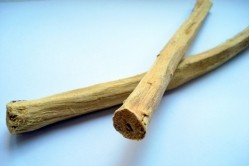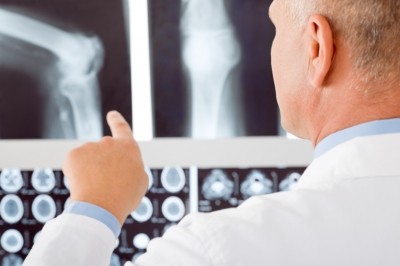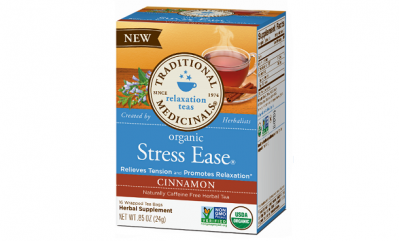New study questions licorice root supplement’s effectiveness as HRT alternative

To relieve the hot flushes, bone loss, vaginal atrophy, and changes in cardiovascular and metabolic function during menopause, many women go to pharmaceutical hormone replacement therapy (HRT).
But as studies show HRT may pose risks by exacerbating breast and uterine cancer development, many women look to botanical supplements as an alternative.
“Licorice root extracts are frequently used in dietary supplements and are believed to contain estrogenic components that might, in principle, provide a spectrum of beneficial effects with reduced stimulation of the breast and uterus compared with that of the endogenous hormone estradiol or the pharmaceutical estrogens used in HRT,” said a new study published in the journal Steroids.
The research is a joint effort between institutions in Thailand and the U.S., with researchers affiliated with the FDA, the University of Illinois at Urbana-Champaign, the University of Mississippi, and Mahidol University in Thailand.
Licorice’s many components
Liquiritigenin and isoliquiritigenin are two widely known and studied components of Glycyrrhiza glabra (licorice) known to have estrogenic activity. In the study, researchers looked at seven other less researched flavonoids, isoflavonoids, and chalcones from the plant extract: Glabridin, calycosin, methoxychalcone, vestitol, glyasperin C, glycycoumarin, and glicoricone.
The researchers compared the estrogenic activity of the seven less studied components with liquiritigenin, isoliquiritigenin, and estradiol.
“Our observations reveal the biological activities present in multi-component dietary supplements such as licorice root extracts,” the researchers wrote. “Furthermore, they highlight the need to standardize the preparation of licorice root extracts in dietary supplements, because the manner in which supplements are prepared could greatly impact the relative proportions of the different components and hence the spectrum of biological activities in different licorice root dietary supplement preparations.”
In the lab
For the lab test, the researchers acquired estradiol from Sigma, and liquiritigenin and isoliquiritigenin from Tocris Bioscience.
The components were extracted from licorice root powder by way of methanol using a percolator. The solvent was removed under reduced pressure at 48°C to yield the dried extract.
Relative binding affinities were determined by a competitive radiometric binding assay using tritiated estradiol as tracer. All of the licorice root components had binding affinities for estrogen receptors at least 1000-times lower than that of estradiol.
“The best estrogen agonists were methoxychalcone, liquiritigenin, and isoliquiritigenin, followed by calycosin, vestitol, and glycycoumarin,” the study said. “Interestingly, the best of these agonists had intrinsic activities equivalent to that of estradiol in terms of activation of estrogen-regulated genes and stimulation of proliferation; they reached this level of activity, however, only at concentrations much greater than estradiol.”
The researchers wrote that it is important to note that the potencies of the most active licorice root components are “several orders of magnitude less than that of estradiol and other pharmaceutical estrogens used in hormone replacement therapies.”









